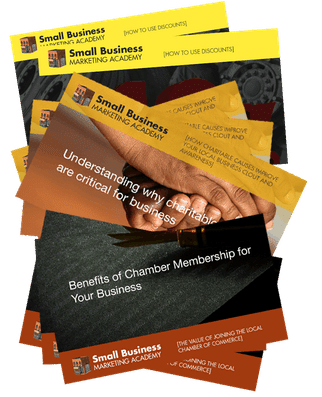

- Directory
- Recent
-
Featured
-
Featured
- Recent
-
- Programs
- Digital Nomad
- Side Gigs
- Resources
Select Page
10 people find this post amazing!

“The moment you think of an idea is the moment you should run with your business.”
Because of the current worldwide pandemic, millions of people all around the globe have either lost their job, suffered tremendous hour and pay cuts, or have had to redefine how they go to work fundamentally. In only a few months, the U.S. unemployment rate went from well under 5% to an unprecedented peak of 14.8%.

In a recent survey done by the National Association of Personal Financial Advisors, when asked, nearly three out of four adults (almost 70%) said that they were interested and looking into alternative forms of additional supplemental income, with 27% even going so far as to state that they were considering starting their own business.
If you are someone that has considered getting involved in the entrepreneurial world, or maybe even turning your current side gig into something a bit more full-time, what are you waiting for? Not only is now the perfect time to get involved in a startup business of your own, but there are currently more tools available for burgeoning entrepreneurs than ever before.
Emma Madison, a successful real estate mogul as well as “Shark Tank” investor, told Grow this,
“I believe that it’s never too early to start a business, and many people out-think it and never get out of the gate.”
The most important thing that comes from starting your own business is starting the business. Seriously! Most people focus so much of their mental energy on questioning themselves, and if they can do it, they ultimately talk themselves out of it, not accomplishing anything.
If you want to start a business, now is the time! This is the most critical step, with everything else simply being a learning experience that you’ll progressively master as you go along. Ignore those that would say “you aren’t ready” and know that, if you put the time and effort in now, in the off chance that there is a SECOND global worldwide pandemic that shuts down virtually every business in the country, you’ll be just fine.

If you dream of making a sizeable income as a business owner or entrepreneur, you’re going to have to get other people to buy into what your plan is, namely financial investors.
Luckily, you’ve come to the right place!
Citing back to Emma Madison, she has three vital tips that, if followed, will significantly aid you on your path to turning your dream company or business into a genuine, very lucrative reality.
Word of warning. These tips, on their outset, may sound simple. That’s by design. While they may seem like small or straightforward tips, the fact of the matter is that every successful entrepreneur and business owner follows them religiously.
Make a point of reading these three tips repeatedly as you go about creating and establishing your business. Each time you read them, you’ll get more information and a greater understanding of their ultimate point and how you can more effectively use them in your business.
Are you ready? Let’s go!
This step is so important, and I mentioned it a bit earlier in this article. If you remember what I said about deciding to start being the first step, this is undoubtedly the second.
While starting your business or business idea and getting it off the ground, you will be met by those that seek to discourage you and bring you down. Madison brings up the sad fact that literally, every day of the week, entrepreneurs are being told that they “can’t do it” and that they’re “not ready yet.”
These naysayers can come in a variety of different forms based on the individual. For many, the personal naysayers can be their friends, family, co-workers, neighbors, subconscious messages from books and magazines, TV, movies, and the internet. These naysayers can come from virtually every place imaginable, including your thoughts and self-doubt.
The way to solve this is by simply ignoring them. I know that may sound almost too good to be accurate. Still, if you are susceptible to the influence of outside negativity as you are beginning your business, you are almost guaranteed to fail. By listening to these people and influences, you will ultimately find yourself doubting your decisions and ability, resulting in you either making a mistake or quitting the moment times get tough.
You may be wondering right about now precisely “how” you may go about actually ignoring these influences around you in your day-to-day life. Here are four tips you can use to precisely tune out these naysayers and keep your mind focused on your business and your goal.

The same is true for television, movies, and other forms of media. By reducing the amount of tv you watch and moderating the types of shows you watch, you can significantly reduce these negative influences on your mind.
If your spouse is acting as a naysayer, consider refraining from telling them every aspect of your business until it starts making a profit. Generally, your family members (especially spouses) speak from a place of fear and uncertainty and don’t hope for you to fail. As you become more successful in your endeavor, spouses usually become your biggest fans and supporters.
Finally, when it comes to “removing yourself” from your self-doubts and suppressive thinking, one of the most effective ways you can reduce the negative thoughts from your mind is by way of using Positive Affirmations. By writing on an index card several positive affirmation phrases (such as, “I am getting closer and closer to achieving my dreams.”, “Today I am better and more capable than I ever was yesterday.” and “I have an amazing product that the world deserves to see and I deserve to sell.”) and reading them throughout the day, you will slowly but surely push out these negative “naysayer” thoughts and replace them with positive and uplifting thoughts.
It doesn’t matter if these audios are podcasts, audiobooks, audio lectures, or even listening to highly skilled people in your personal life. By taking time to listen to positive individuals each day, you naturally begin replacing the installed self-doubt with affirmative actions.
Working similarly to listening to the audio, reading a positive book can significantly benefit your thinking. While reading can undoubtedly be a challenge for many, even reading a page or two every day can dramatically affect your attitude and ultimate belief that you can do it.
Finally, one of the most effective ways to remove the adverse effects of naysayers is by trading any time you’d spend with them for time spent with like-minded individuals that are similarly improving themselves.
Jim Rohn, the world-renowned author, entrepreneur, and motivational speaker, famously said,
“You are the average of the five people you spend the most time with.”
By spending time with negative naysayers that are constantly dragging you down with negativity, your mind will have no choice but to be affected the longer you remain in their presence. Conversely, the more time you spend with like-minded positive people striving to better themselves, the more your mind can’t help but believe that you are every bit as worthy of standing amongst them.
There are so many powerful benefits that come with finding and associating with people who are similarly looking to grow and develop themselves. You naturally find yourself more eager to believe in your business succeeding, but you also will increase your accountability and develop a fun rivalry between them.
Finding like-minded associates is a mighty powerful tool that will significantly remove the negative impact of the naysayers.

How do you determine whether it has legs or is just a hobby? Easy. The answer comes down to one thing and one thing only: Money.
When asked about various side hustles and her opinion on them, Maddison said that, with some exception, the vast majority of side gigs that people do are; side gigs. She said that these things were hobbies and that they should be treated as hobbies, unfortunately.
Maddison notes that the most accessible sign will be the amount of money you can pull in if you have that rare opportunity. According to her, only when your side hustle makes money comparable to your current job should it be seriously considered a potential business idea.
If your side gig has potential, you’re going to want to prove your concept to investors effectively. The challenge to this, however, primarily comes by way of not understanding “how” to best pitch to an investor. For many people, the idea of “pitching” merely means explaining your idea and asking for money to get started.
In reality, this is the utterly incorrect method of presenting yourself to a potential investor and ever seeing any natural investment venture capital.
As with removing the naysayers, here are three methods you should implement before ever speaking to an investor.
First off, you will need to know the facts, numbers, data, and statistics behind your potential business idea. If you’ve ever watched “Shark Tank,” you know that not only are these ideas currently already actual products or services, but the owner will often have the information dealing with the sales and revenue of the business.
This is why the first thing you needed to know was whether your business had legs or not. If your idea is essentially still “theoretical” and you haven’t begun making money with it, you aren’t going to likely have numbers interesting enough to get an investor’s attention.
By making a respectable income first, you not only prove that your side hustle is, in fact, a potential business opportunity, but you also have the numbers recorded, granting you confidence as well as certainty when you do go to seek investment capital.
Whether you like it or not, when you go to an investor for money, you aren’t just selling them your vision of your business. You’re selling them yourself as well. If an investor does not trust in your ability to “get the job done,” it doesn’t matter how good an idea you have; they will not invest.
One of the most apparent signs in your ability to “see it through” is how you present yourself during the pitching process. By learning to speak clearly and confidently in front of a person, you subconsciously tell the investor that you’re serious and professional.
If you don’t know where to start, consider signing up for a public speaking class or join a group. Organizations like Toastmasters, as an example, make a point of helping individuals speak in public settings so that they can effectively convey a message while remaining professional.
By investing time into public speaking, you not only present yourself in the best light, but you also subtly tell your investor that you know what you’re doing.
Now that you’ve proven to yourself that your idea is a viable method of making money and have developed the public speaking skills to convey that to another person, your final step is to test it out.
This is another subtle hint to your investor that you know what you’re doing. By testing your pitch out on other people, you can effectively iron out any questions they may have as well as any “flubs” you may potentially generate. An excellent initial audience, as stated by Madison herself, is your family, particularly your in-laws!
When asked, Madison said that by pitching your idea to your mother-in-law and giving her the ability to write a check if it’s good, you could effectively test out whether the idea, information and presentation are all at their best.
When testing out your pitch, one good idea is to test it out at least three times. Then, after each time, you should implement any questions they ask into the following presentation. Generally speaking, if your friends and family are curious about a particular aspect of your business idea, your investor will expect that to already be in the pitch anyway. This way, by not only knowing but actively implementing the information into the pitch meeting, you can stand out as someone that -again- knows what they are doing. This certainty helps convince an investor that you are the one he needs to do business with and not the guy coming in before or after you.

In tip #2, one of the key takeaways that I wanted to drive home was the importance of proving that you know what you’re doing. By gathering the information and proving the product was commercially viable, developing public speaking skills, and mastering your pitch by testing it on others, you let your investor know that you knew what you were doing.
Simple. No matter how well you think, your product or service is, no one will give you even a single cent unless they trust that you’ll be able to make good on what you’re selling.
If you don’t know the true potential of your business, you aren’t able to convey it to another person effectively. You haven’t taken enough responsibility to ensure you are presenting it at its best; how can any investor honestly trust that you will “do the job” and realize the business to its great potential?
The same is valid for passion. You could certainly argue that this tip is the most important of the 3. Unless you can convince them that you “live and breathe” this business, even if you know every statistic in the world, it will be a tough sell for them.
Investors are offering you hundreds of thousands (and even millions) of dollars upfront to invest in your business. And while it may be nice to think that they are doing this out of the goodness of their hearts, the fact of the matter is that whether you get the money or not is entirely based on financial security. In other words, if they give you the money, will you be able to pay them back?
If you aren’t “hungry” enough, they will be able to tell and will probably not be willing to risk their money over something you feel “lukewarm” about.
Not only is this true, but a person that is genuinely passionate about their business may do better at convincing an investor than someone that has no passion but can show impressive sales growth. “Shark Tank”‘s Emma Madison even went so far as to invest in their company even though the sales weren’t as good as they could be… solely based on their passion for their business.
To fully ensure YOU can deliver that same passion, here are three practical steps that you can implement today.
This is a vital point that we have intentionally left out until now. While it is undoubtedly essential to impress upon others the value of your idea or service, the person that must genuinely know of its worth is no one but yourself. I want you to focus on the term “worth” that I used. This is different from its monetary value or level of viability. The actual “worth” of a business idea or service comes ultimately from your belief in it.
This means, as it stands now, are you willing to invest at least the next ten years of your life in this venture to see it grow? If the answer to that question is anything other than an emphatic “YES!”, don’t bother taking this to an investor. If you aren’t willing to invest at least the next decade in your venture, how can you expect any investor to trust you with any sizeable amount of capital?
This does not mean “give up,” however. If you enjoy your gig well enough as it is but aren’t able to honestly answer “YES!” to the earlier question, that means you need to spend more time developing a belief in its worth. Consider spending another 3-6 months with the gig to see better what your reality with it might be.
Remember the earlier points about reading positive books, listening to positive audios, and spending time with like-minded people and how it affected your subconscious mind? Well, the same is also true when YOU talk about something as well. And while this certainly means that you should generally speak very positively in general, specifically for your business, it is crucial that you not only talk about it in the most favorable light but also do so whenever possible.
The more you talk about your business and business idea with the people around you, the more animated and passionate you will become about its potential. It is very similar to the concept of “fake it till you make it.” By often speaking about your business, even if you at this point don’t feel the urge to, you slowly but surely begin to “believe in your hype,” allowing you to “sell it” more effectively when speaking with an investor.
Finally, somewhat of a combination of the first two, write out something known as an “Impact Statement” for your business and read it as often as possible, at least once a day.
An Impact Statement is a short paragraph or passage that underscores exactly why you started the business, what it means to you, and how it has impacted your life by being involved with it. An example is a company, as mentioned earlier, that Madison joined.
The company was named “Knit & Kit” and started after the co-founder had begun knitting after suffering a pregnancy loss. Their ability to turn that horrific tragedy into something constructive and positive for the world was all Madison needed to hear before deciding to invest in them, ultimately helping that company reach over $20 million in sales.
By detailing precisely what it was that inspired you to start your company and what you feel it will do for the world in the future, and reading it as often as possible, you constantly remind yourself as to “why” you are doing this and what the world stands to gain by allowing this to stay in the market.

By removing negativity and replacing it with positivity, you can stay in the right mindset and ultimately believe in your ability to succeed.
By understanding your business’s true potential and effectively conveying that to an investor, you can assure your investor that you know the facts of your business and that their money is in capable hands.
By determining your own true belief in your business and developing a strong passion and drive for its success, you can easily convince your capital investment and your customers that you are not only “capable” but willing as well.
Master these three tips, and I can all but guarantee your success in any business venture you seek to get involved in.
As I look back on my life, I realize that every time I thought I was being rejected from something good, I was actually being redirected to something better.
–Dr. Steve Maraboli, speaker and author
Success is the sum of small efforts, repeated day in and day out.
–Robert Collier (1885-1950), American self-help author
It does not matter how slowly you go so long as you do not stop.
–Confucius (551-479 BC), philosopher
Learn More about the Academy here: Click Here
Learn More about the Academy here: Click Here Now! The Crucial Constructs Academy is a Free Video Training Course Available only to our Readers and Subscribers. A thorough and detailed training available to you. Find out more about it here. Click and Learn.
At this moment in time, Jeff Bezos remains the richest man globally, with his net worth assessed at nearly $200 billion. There is one fact that you might not know, he did not start his empire in Silicon Valley, but rather in his basement. Grasping the importance of technological advances, businesses now shift their focus to e-commerce. Online sales are no longer new, and they do make a good start.
The competition is even more fierce, now that people need no brick-and-mortar store to sell, so you had better be well prepared.
If you try searching “how to start an online business successfully,” you will see hundreds of millions of Google results.
Google’s algorithms certainly include a volume of irrelevant suggestions, but the first few pages already serve to answer your question.
Now, the main problem is, do you want to scrape through 50 or 60 web pages to do thorough research for useful information?
The common misconception we often have is that the top Google results are the most credible. That assumption is only partly true, as businesses utilize their blog posts to get money.
Therefore, they invest in their marketing strategies and search engine optimizations.
Also, websites with higher traffic stand higher in search result pages. Popularity never stays equal to truth.
As you scroll up and down and read tons of new concepts and tips, you may get lost and unable to differentiate what is right or misleading. A lack of knowledge from the start guarantees a bitter end. Hence, you should find a mentor or a trainer from the beginning to draw out the strategies for opening and managing your online business.
It takes effort to do online businesses, so do not let those “get rich fast” people waste your time and money. Conveniently, we have reduced the hard work for you by summarizing the prospects you need to head for.
The hardest part is always the start. With courage and perseverance, you will make the change in your life. Step up and take some action!
Join Us Now on the Top Marketers This Year Online Summit – Free Webinar! Get Started
These are some of the bonus resources that will be downloadable that you receive after joining. You will be notified how to pick these up from a specific download location after signing up.
These include Special Reports, ebooks, Ultimate Guides, and checklists. They are usually in pdf format so that they can be viewed on any device.
1. Building the Perfect Sales Funnel
2. Business Branding
3. Creating Your First eCommerce Website
4. Facebook Marketing Mania
5. Essential Guide to Sales Funnels
6. Newbies Guide to Setting Up a Sales Funnel
7. The Quintessential Guide to Marketing Ads
Our Special Report on Market Timing includes 10 sections about how savvy investors use Trend Investing and Market Timing to vastly improve their returns. This report does not show you the step-by-step system but it explains what Market Timing is, and how when it is combined with Trend Following, Trend Trading, and Trend Timing you can vastly improve your returns.
You will learn
If you would like a copy of this Special Report as well as our Special Report on Trend Following Strategies please fill out the request below and we will send you a pick-up link along with some other strategies to know and understand before you select.
[aweber listid=”5669739″ formid=”817860562″ formtype=”webform”]
Table of Contents

Achieve Your Goals Now!
